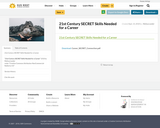
21st Century SECRET Skills Needed for a Career.
- Subject:
- Education
- Material Type:
- Activity/Lab
- Homework/Assignment
- Date Added:
- 09/14/2018

21st Century SECRET Skills Needed for a Career.
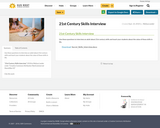
Use these questions to interview an adult about 21st century skills and teach your students about the value of these skills in life.
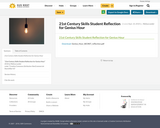
21st Century Skills Student Reflection for Genius Hour
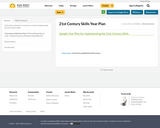
A Year plan to guide your classroom or school in implementing the 21st Century Skills
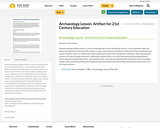
Students working collaboratively on a mini-archaeology dig to locate and identify artifacts, create hypotheses about the objects and what information they tell us about a society, and research past artifacts to determine if their hypotheses were correct. Students had to use collaboration when working on the dig, when creating their hypotheses, when measuring the artifacts, and when forming conclusions. Additionally, students had to use critical thinking when formulating theories, researching and reviewing data online, assessing their ideas, analyzing and comparing their hypotheses with archaeology studies online, and when justifying their hypotheses (and proving them) with the artifact data they discovered online, and forming conclusions.

Game Instructions and Career Jenga Questions:
On the blocks of the Jenga game, the teacher will write different career-related questions for students to answer. These questions should help students further explore Career Education curriculum Goals and Outcomes.
This game can be played different ways, be creative!

Introduction to Career Education for teachers

An inquiry-based project to map the land in your community. The key concepts in this unit are grounded in Indigenous beliefs of interconnectedness, connectedness, and respect for all things.
The driving inquiry questions for this unit are:
1. How can respect for the land be shown?
2. What do we look for when setting up a camp?
3. What stories or teachings are connected to key locations in and around our community?
4. How has the land around our community changed over time?
5. Who do we share our community’s lands with?

This is a collection of tools to assess the effectiveness of family engagement in a school's learning community.
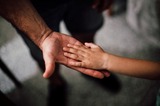
Please find the required PowerPoint presentation below. This workshop has been developed as part of the course Parents in Teaching and Learning (ECUR 823) at the University of Saskatchewan with professor Debbie Pushor.This workshop is meant to be personalized. Select the activities you wish to discuss, and spend as much or as little time on the concepts that speak fully to your school. As you select activities and where to put your focus think of what needs to be done as a school and as a classroom teacher before school begins, during school, and over the summer. Pick and choose the activities that best fit your school and your school’s needs.If you have any questions, feedback, or require clarification please feel free to call or email Melissa.lander@sunwestsd.ca.
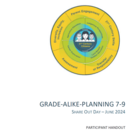
On June 10, 2024, the Sun West School Division Grade-Alike Planning Team hosted a Share Out Day in which they presented their collaborative projects and provided links to all resources explored throughout the year. The teacher recommended resources for Grades 7, 8, and 9 are available in the GAP Hub. This participant handout contains information about each of the learning topics and includes learning outcomes and links to informative websites as recommeded by the guest presenters.
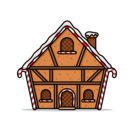
Cross curricular unit plan.
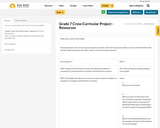
A cross curricular project for Grade 7 in Social and Math.
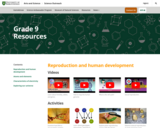
The University of Saskatchewan offers this tremendous resource that promotes the richness and diversity of the sciences, nurture curiosity and innovation, and inspire students to consider a career in science, and support teachers to provide exciting educational experiences.
Check out the great collection of video and activity resources for teachers and parents to supplement and enhance Grade 9 science learning.

An excellent resource for grammar minilessons and activities that follow the transfer of responsibility model. Great videos and opportunities for We do and You do.

Table of Contents
I. Toolkit Overview Pg. 2
• Purpose of the Toolkit
• How to Use the Toolkit
II. Background Pg. 3
• What is Parent Engagement?
• Why is it important?
• What do we mean by sustainability?
• What will success look like?
III. Sustaining and Improving Parent Engagement Pg. 4-6
• How did this effort come about?
• What does experience tell us about the importance of each strategy?
IV. Achieving Success: Guide for Creating Your Own Strategies Pg. 7-17
• Creating a Parent Engagement Roadmap
• Developing a Parent Engagement Checklist/Self Assessment
• Establishing a Parent Engagement Support Network
V. Source Material & Additional Resources Pg. 18

"This high quality PBL unit – designed for English, math, and science – invites students and teachers to explore solutions for hunger and malnutrition around the world. For every piece of artwork submitted from the project, the Bezos Family Foundation will donate $3 (up to $700,000) to youth-focused nutrition programs."
You will have to provide your information to download the project.
You could use this project to participate in the Hunger Challenge. https://www.studentsrebuild.org/challenges/hunger

This is a PeBL based project where students are required to follow / research the NCAA March Madness College Basketball tournament. Each grade's assignment and tasks are based off of the Math Stats and Probability outcomes and indicators. Hands on learning and lots of fun!
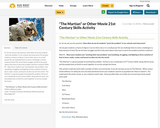
So, let me ask you the question: How often do we let students “work the problem” in our schools and classrooms?
Do we give students a chance to figure it out on their own or in a small group? Do we challenge them to solve a challenge in a fixed amount of time? Do we let them struggle and fail to the point where they have to work the problem and find a solution?
With PL - Now every student was “working their own problem” and stumbling, struggling, and fighting to find a solution of how to learn, make, create, and launch an idea out into the world.
“The Martian” is a great example of working the problem. He has to use a multitude of 21st Century Skills, along with his team, and the people back on Earth to work together to survive and get him home.

Contained herein are projects for Grades 6 - 9 Math Outcomes for Stats and Probability. They are meant to use as extensions to the knowledge and skills of those outcomes and connect with real life and can be used in a Cross Curr with modifications.